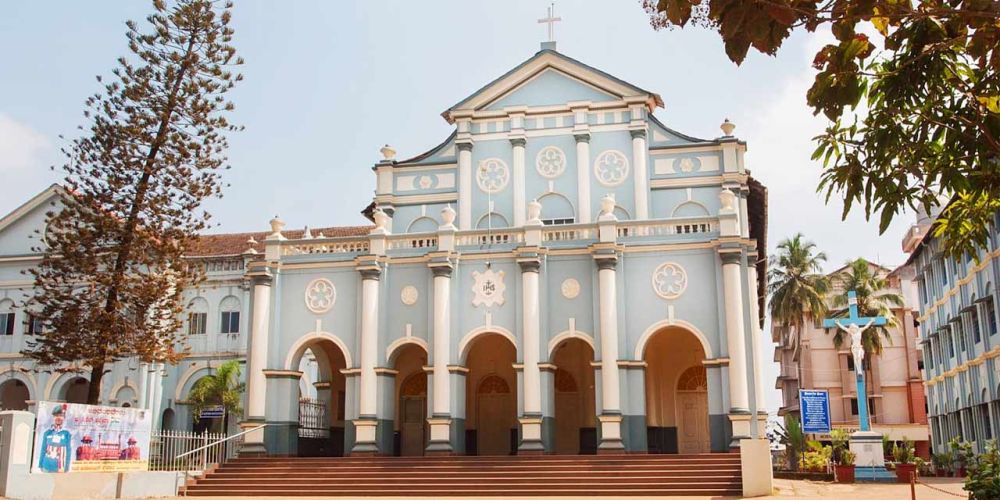

The coastal city of Mangalore, known as Mangaluru in the local Kannada language, is rich in history and cultural diversity. One of the key attractions in this bustling city is the Aloysius Chapel also known as the St. Aloysius Chapel, which is a stunning epitome of architectural brilliance and spiritual reverence.
The history of Aloysius Chapel dates back to 1880, when it was constructed by Jesuit missionaries. Named after St. Aloysius Gonzaga, the chapel is situated in the heart of Mangalore, on the campus of St. Aloysius College. The college itself was established to impart quality education in the region. This chapel is a significant landmark not just for its religious importance, but also for its marvelous interior which is often compared to the Sistine Chapel in Rome.
It is adorned with spectacular paintings by the Italian Jesuit artist, Antonio Moscheni in 1899, during his brief stay at Mangalore. The artworks depict various scenes from the life of St. Aloysius Gonzaga, the Apostles, Jesus Christ, and other saints. These frescoes and oil paintings are indeed the highlight of the chapel and draw art enthusiasts and tourists from around the globe.
Tourism at Aloysius Chapel has gradually evolved with the increase in the awareness of its historical and artistic significance. It was first seen as a place of worship and education, but over time, it has become a site of cultural heritage and a major tourist attraction in Karnataka.
As global interest in cultural tourism gained momentum, the chapel began receiving a higher number of visitors who came to admire its architectural beauty and the magnificent artworks within. Recognizing its potential, various efforts were made to preserve the paintings and maintain the grandeur of the chapel, allowing for a better tourist experience.
In the recent years, there has been a noticeable trend in tourism where travelers are seeking more immersive and cultural experiences. Aloysius Chapel fits perfectly into this category as visitors get to explore the magnificent art and gain insight into the historical context of the region.
Interactive and guided tours have become more popular, offering tourists the context behind the stunning visuals they witness. Educational tourism is also on the rise, with students from art and history backgrounds visiting the chapel to learn about the intricate artwork and its restoration processes.
Eco-tourism and sustainable travel practices have influenced the way tourist attractions, including religious sites, operate. Efforts are taken to ensure that tourist visits to Aloysius Chapel are conducted in a manner that is respectful to the sanctity of the chapel and sustainable for its future.
As a destination expert, it is noted that Mangalore's tourism industry, including visits to landmarks like Aloysius Chapel, contributes significantly to the city's economy and cultural preservation. Visitors are encouraged to embrace the serenity of the chapel, learn about its past, and appreciate the fusion of art, history, and spirituality that it represents.